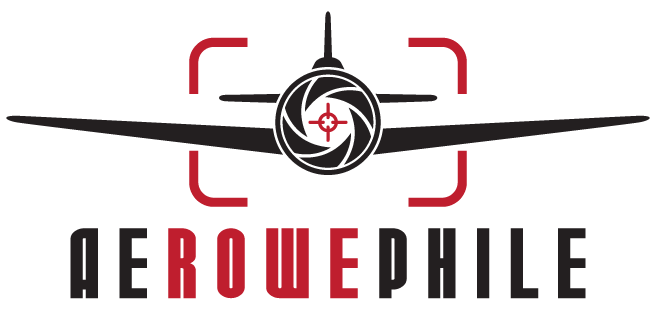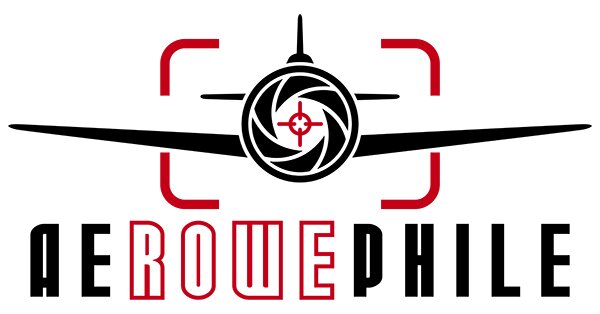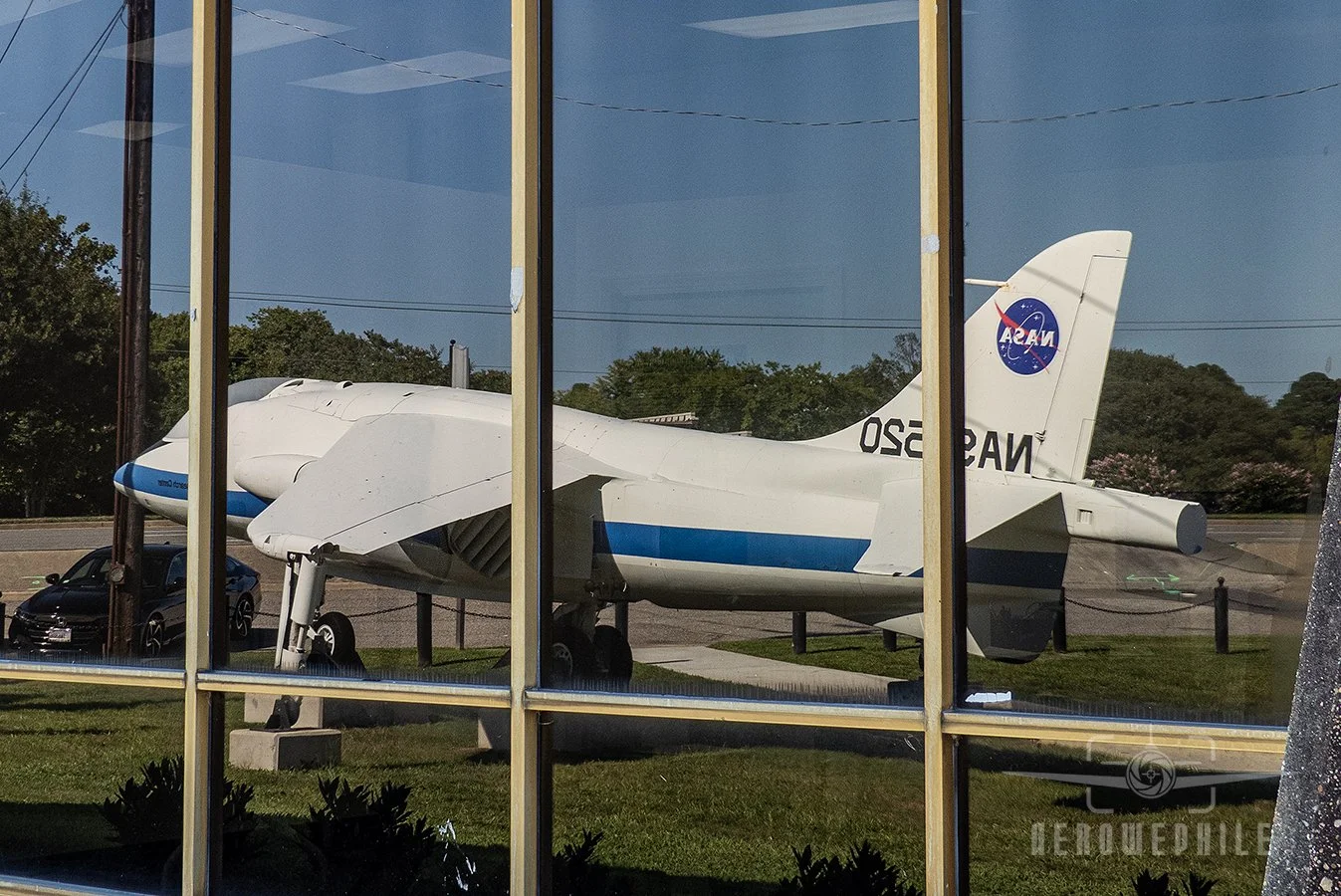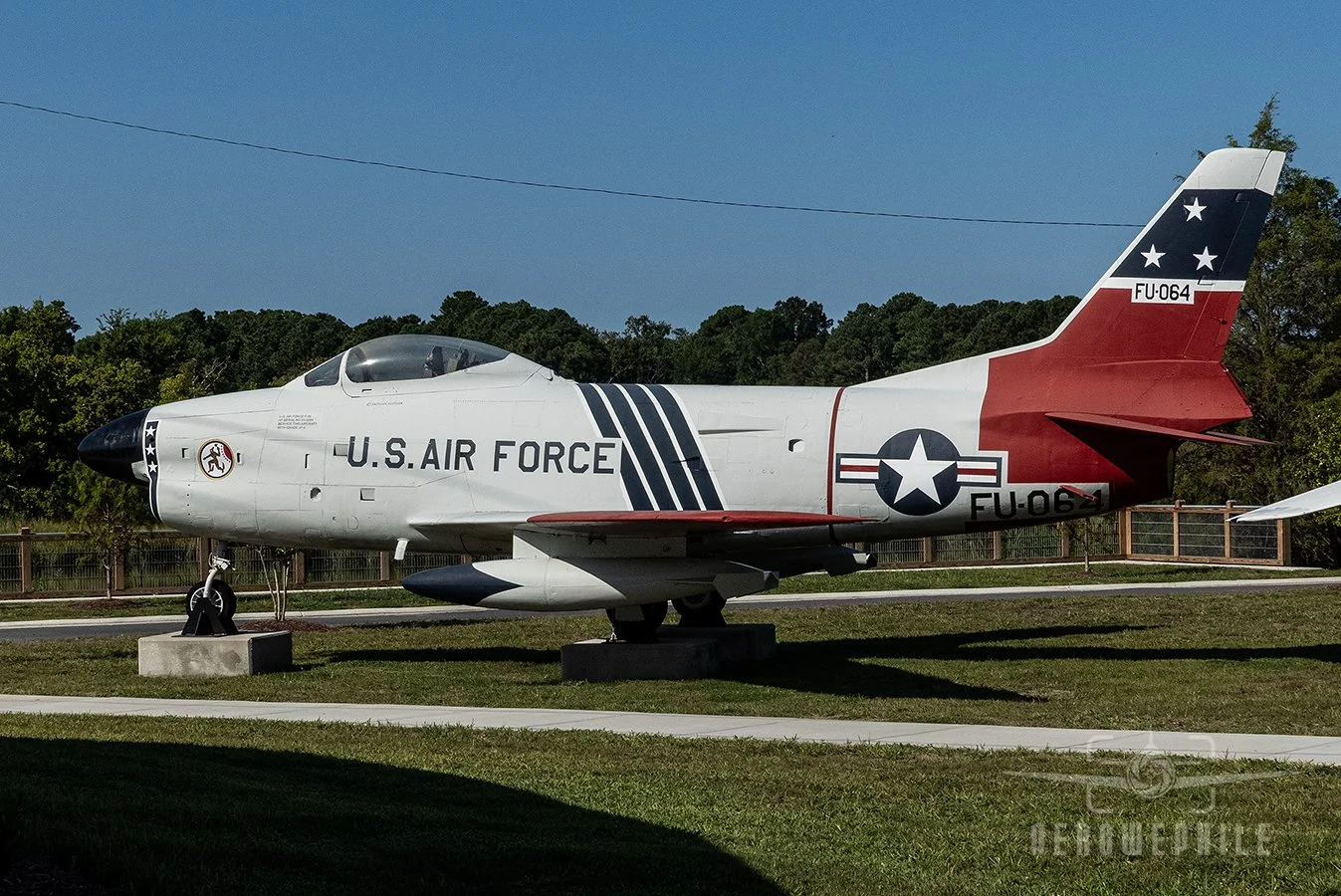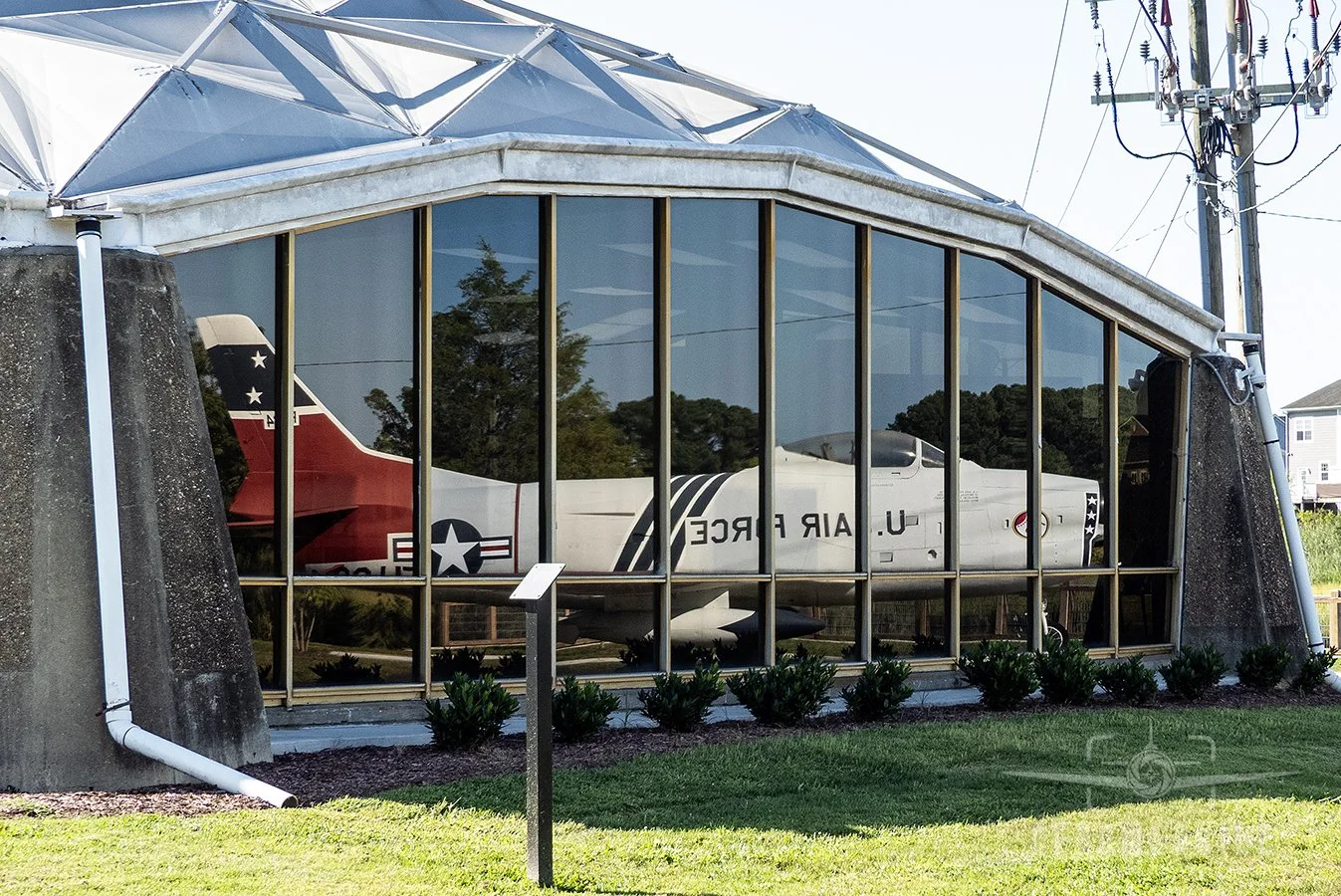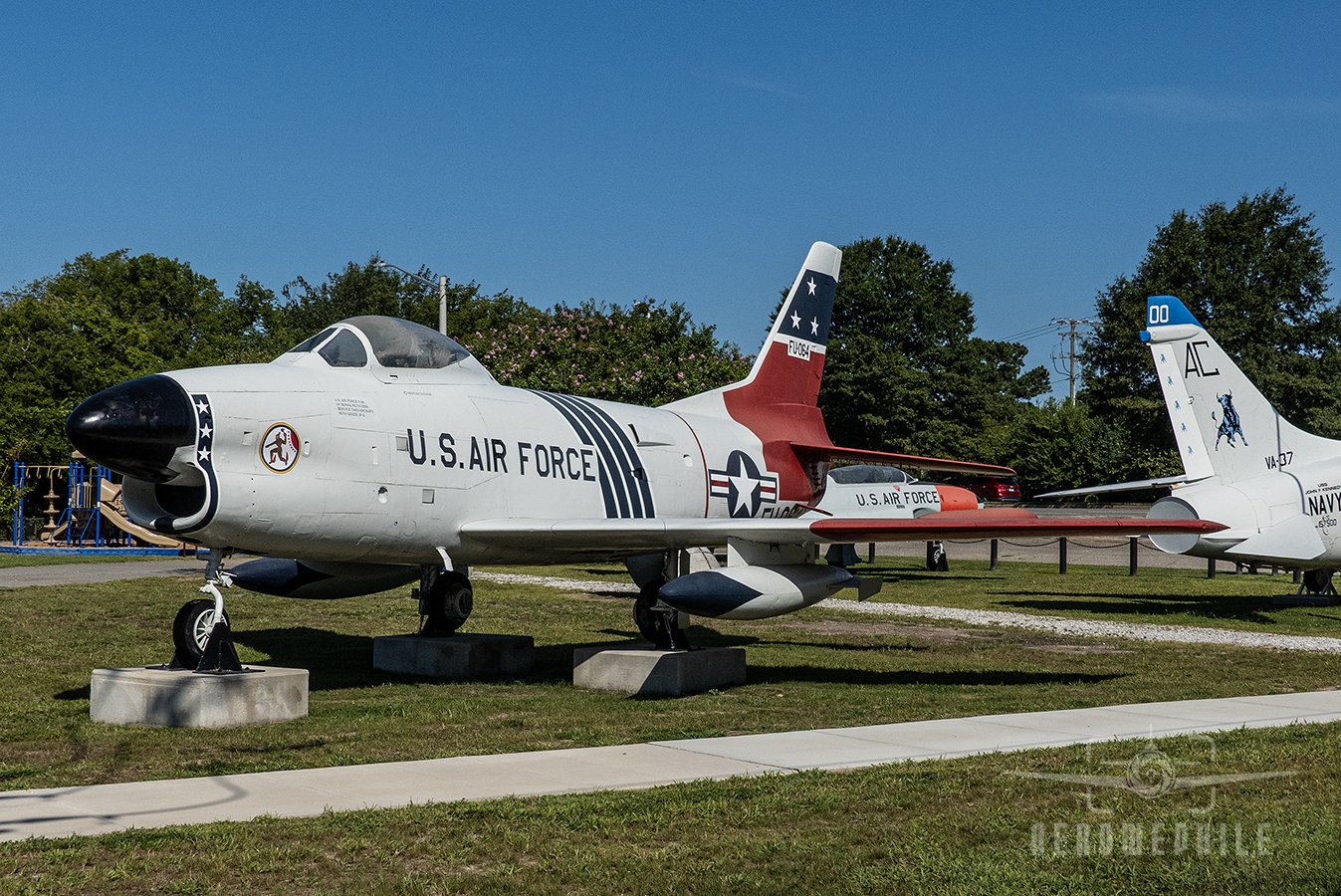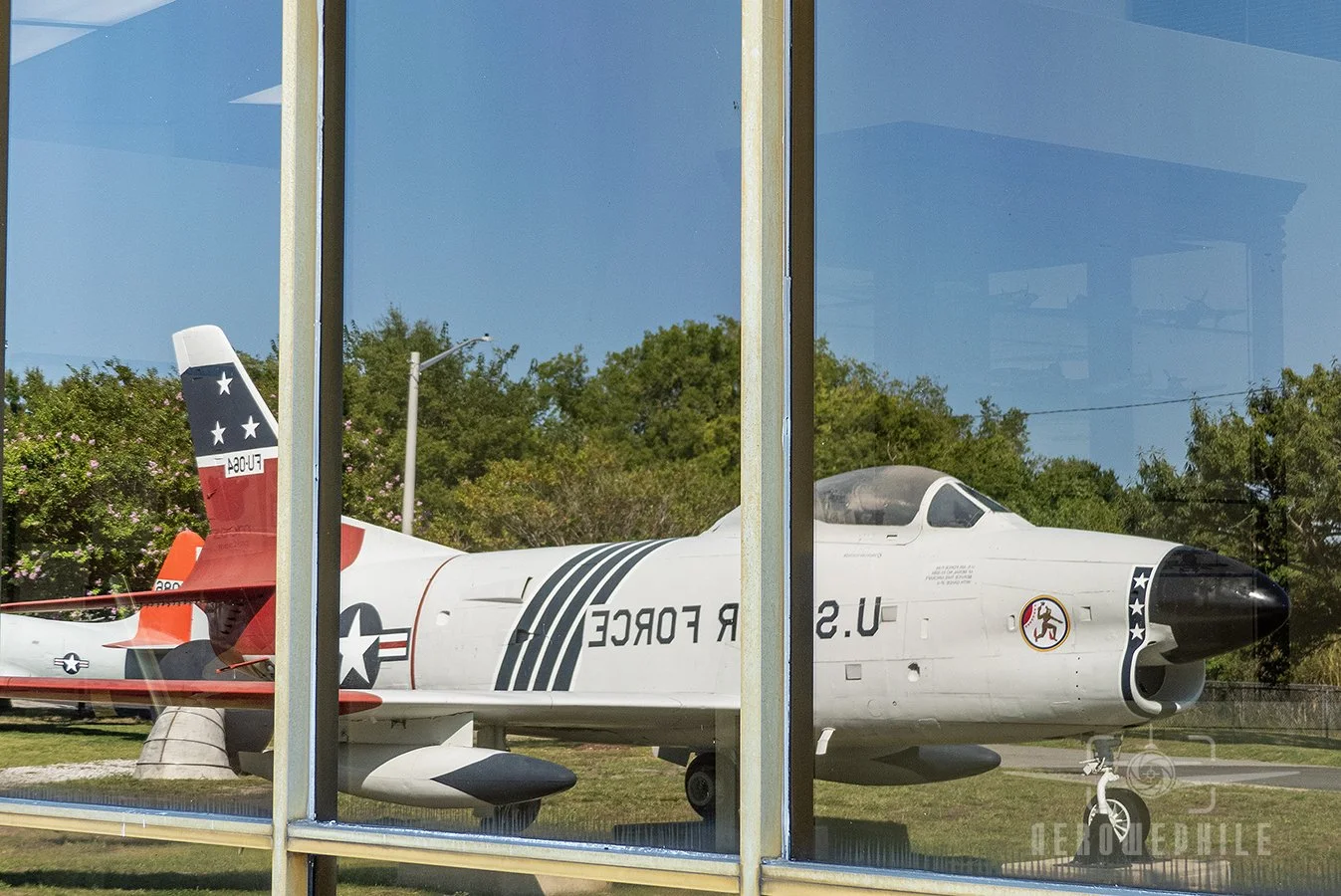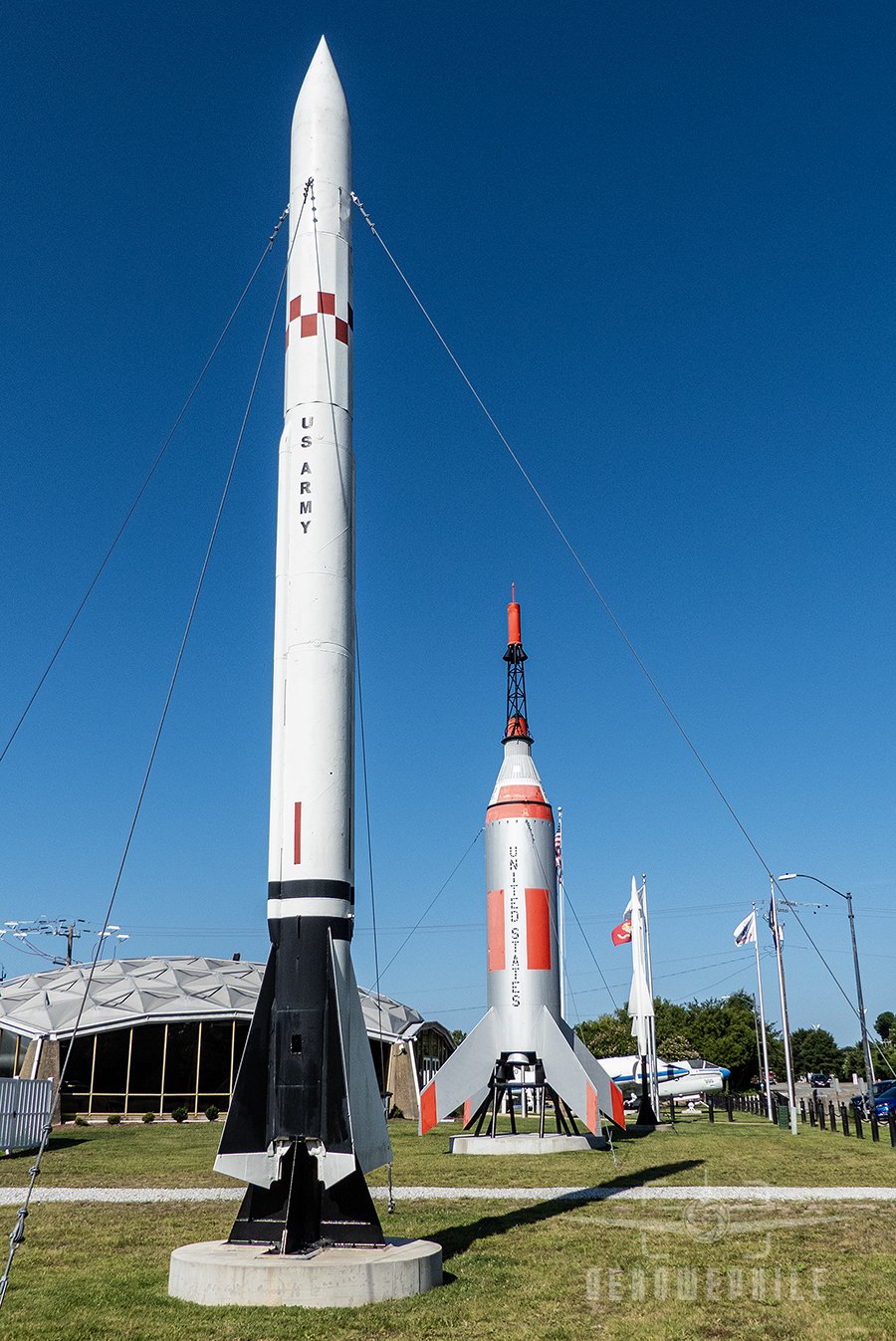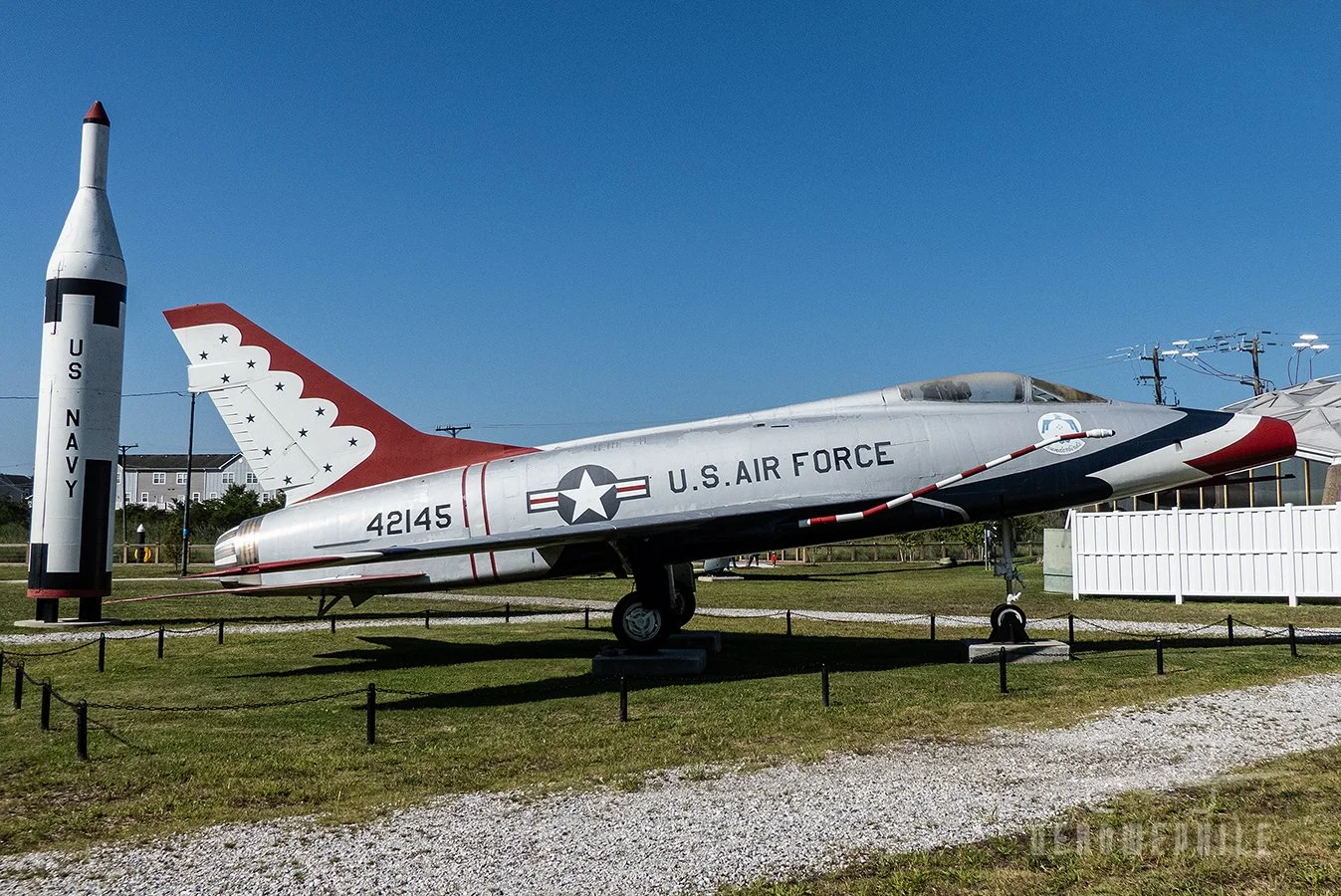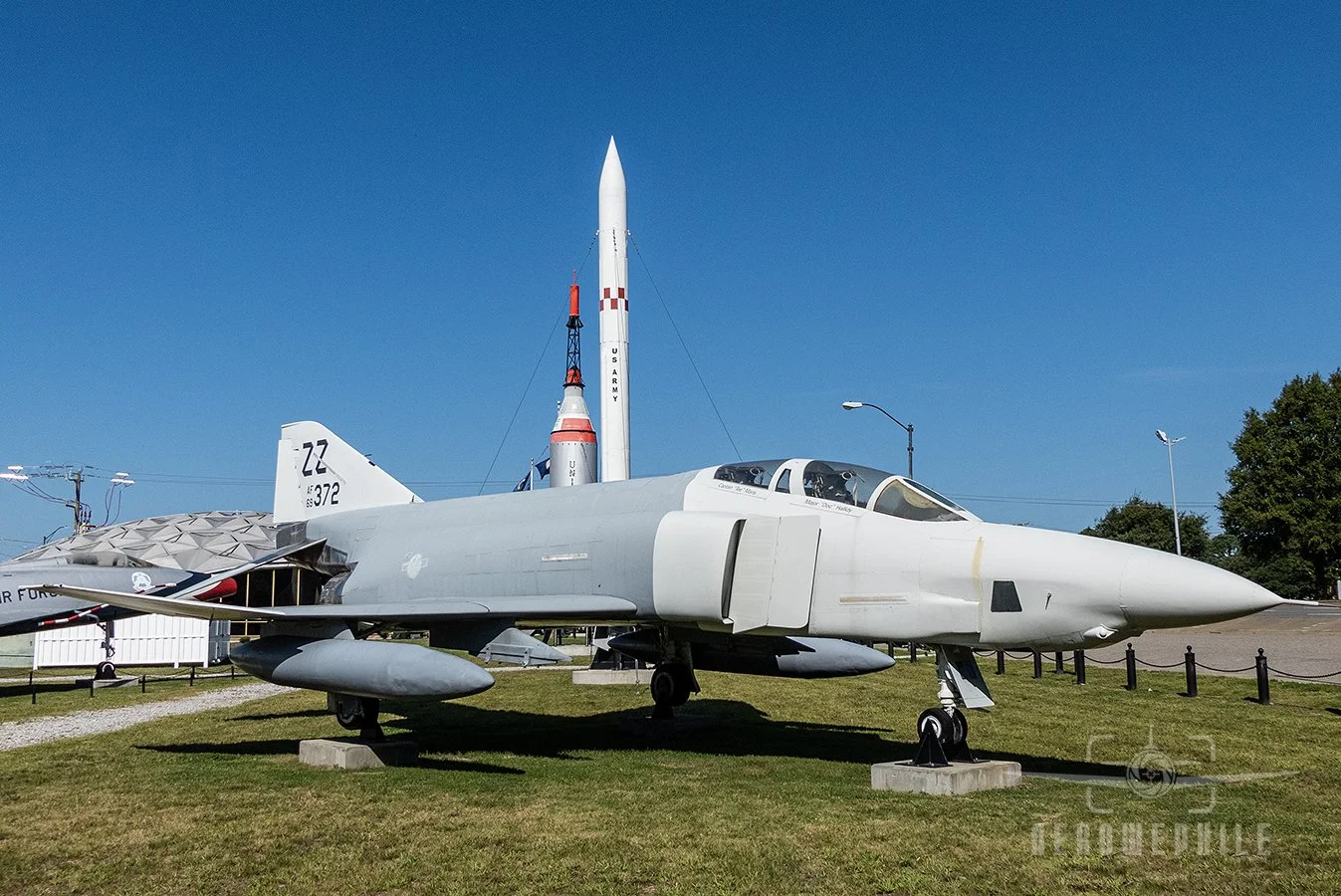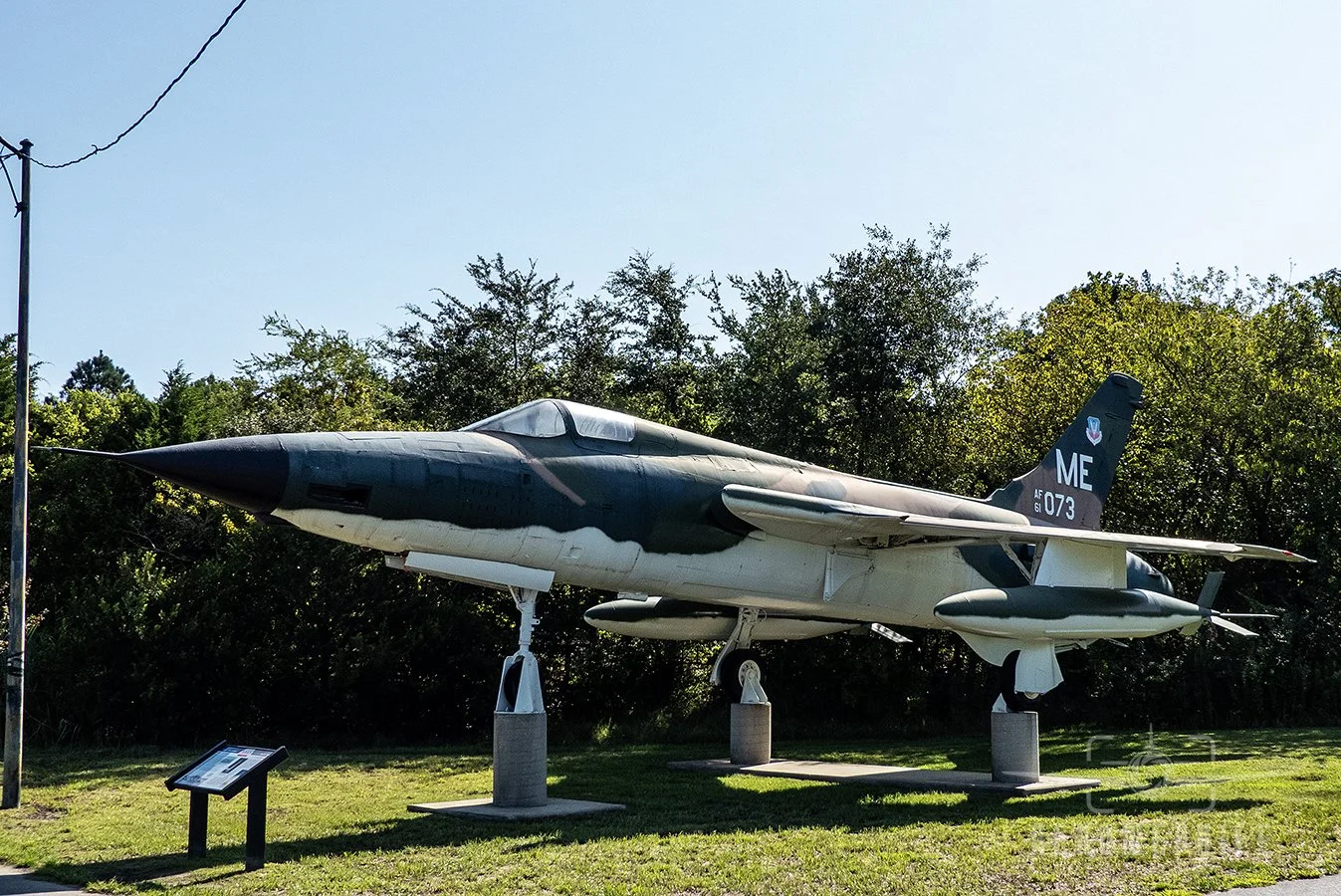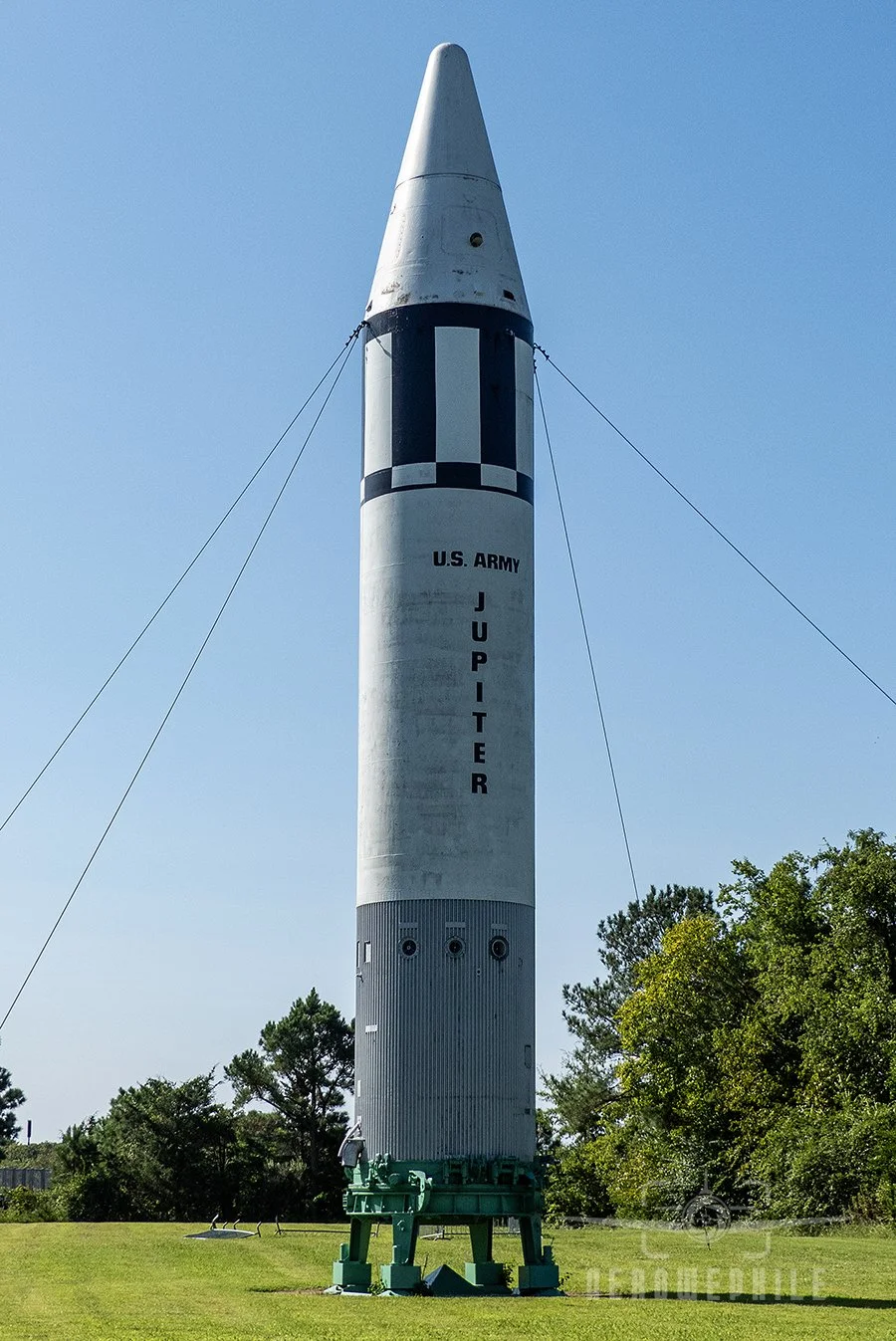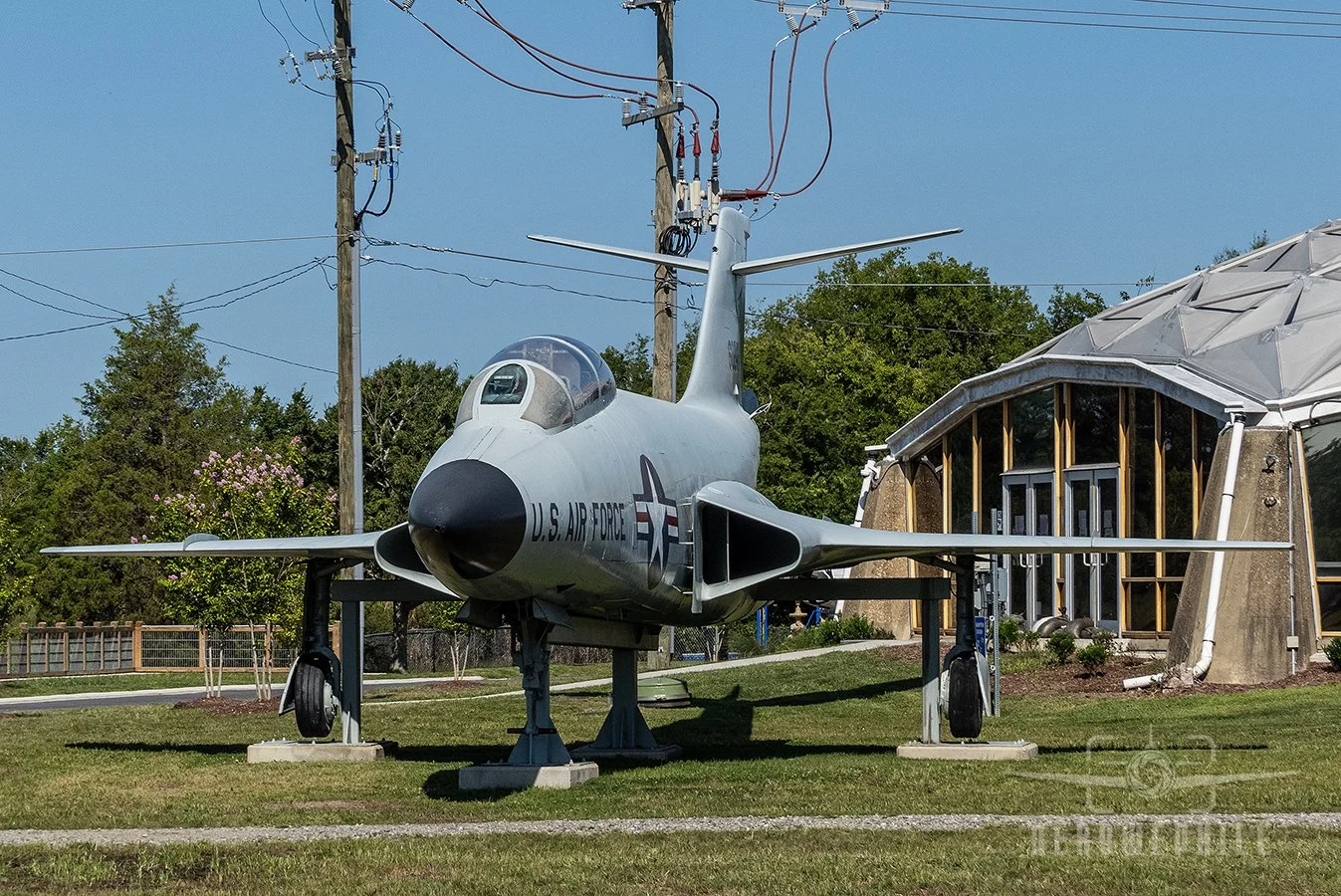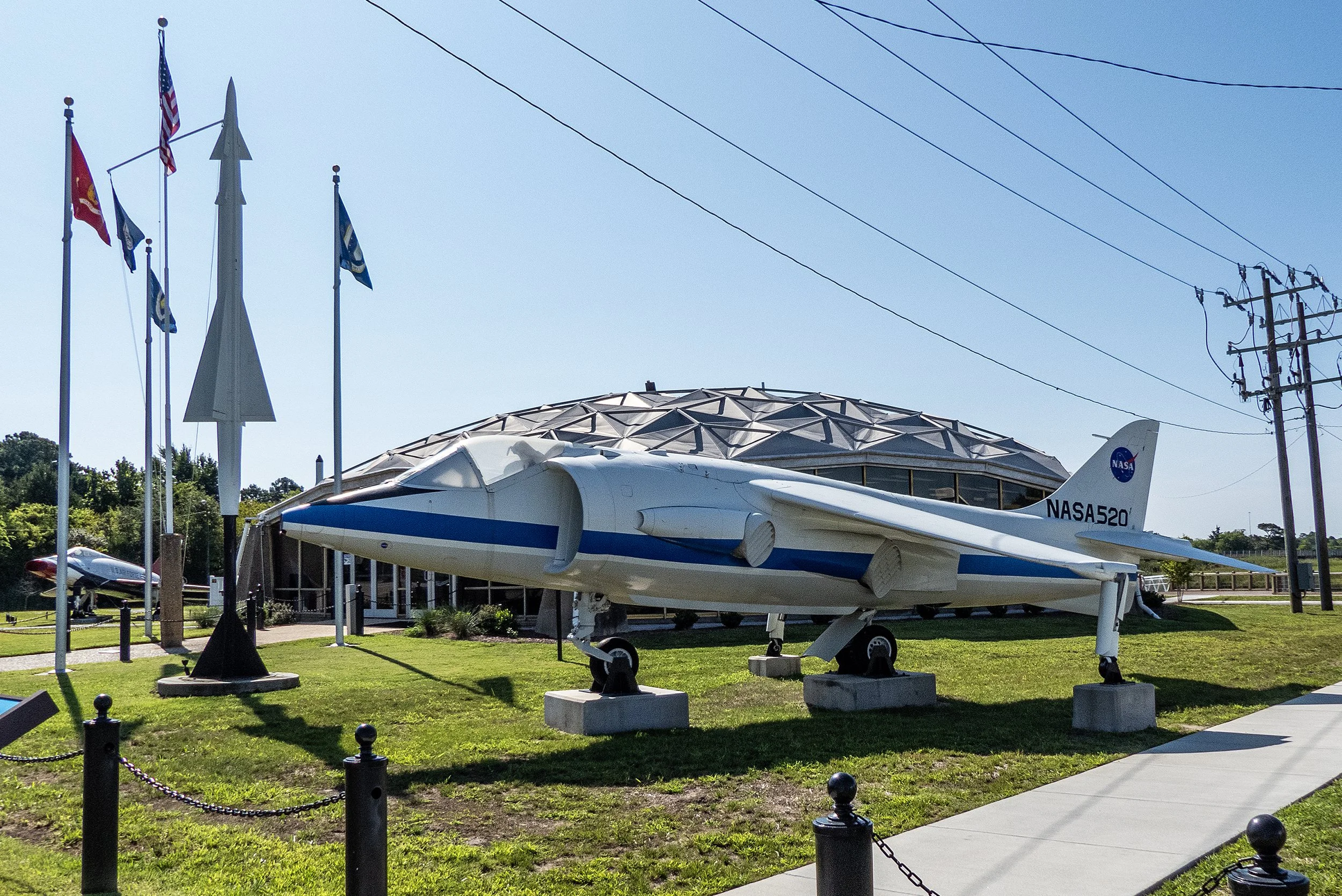
Hampton Air Power Park and Museum
On my trip to watch the Frecce Tricolori perform at Virginia Beach, I made an early morning stop by the Hampton Air Power Park and Museum which was just a couple of miles from my hotel in Newport News, VA. This free, 15-acre park features several vintage aircraft and experimental space launch vehicles from the 1950s and 1960s, including jets, missiles and rockets. Many of the displays have connections with nearby Langley Air Force Base and NASA Langley Research Center.
21Aug24
The Hampton Air Power Park is an outdoor, roadside museum in Hampton, Virginia which recognizes Hampton's role in America's early space exploration and aircraft testing
XV-6A Kestrel - NASA V/STOL research aircraft - 64-18266 - The XV-6A Kestrel (NASA aircraft No. 520) was used extensively by NASA Langley Research Center for testing and evaluation of vertical/short take-off and landing (V/STOL) flight.
XV-6A Kestrel - NASA V/STOL research aircraft - 64-18266 - One of nine built, all were pre-production aircraft used for development, eventually leading to the Harrier “Jump-Jet” used by the USMC, and the militaries of United Kingdom, India, Italy, Thailand, and Spain.
XV-6A Kestrel - NASA V/STOL research aircraft - 64-18266 - The design of Project 1127 was started in 1957 as a collaboration between Hawker Aviation and Bristol Siddeley Engines (Later Hawker Siddeley Aviation).
XV-6A Kestrel - NASA V/STOL research aircraft - 64-18266 - The Pegasus engine in the Kestrel provided a new solution to the problem of vertical takeoff and landing.
XV-6A Kestrel - NASA V/STOL research aircraft - 64-18266 - The four rotating nozzles provide downward thrust for vertical takeoff and rotate backward for normal flight. The nozzles can also rotate to any angle for short takeoff or in-flight maneuvering.
XV-6A Kestrel - NASA V/STOL research aircraft - 64-18266 - Two of the XV-6A Kestrel aircraft were transferred to NASA. Both still exist, and both are on display in Hampton, Virginia. The other example is at the Virginia Air & Space Center.
MIM-3 NIKE-AJAX Upper Stage - Surface to Air Missile (SAM) - There are two NIKE-AJAX liquid-fueled, upper stage rockets on display here in the park, flanking the entrance. With a range of thrity miles, these missiles could carry either a nuclear or conventional warhead.
F-86L Sabre - All-Weather Fighter/Interceptor - 51-3064 - Manufactured by North American Aviation at Inglewood, CA, was accepted by the USAF on February 27, 1953, and continued in service until March 1962.
F-86L Sabre - All-Weather Fighter/Interceptor - 51-3064 - The F-86L Sabre was assigned to Air Training Command units at Tyndall AFB, FL, and Perring AFB, TX.
F-86L Sabre - All-Weather Fighter/Interceptor - 51-3064 - This F-86D airframe was returned to the manufacturer where it was modified to F-86L specifications.
F-086L Sabre - All-Weather Fighter/Interceptor - 51-3064 - Later model F-86 featured a radar nose above the jet intake. Crews often referred to these as Sabre Dogs because their long nose could sniff out prey much like hunting dogs.
F-86L Sabre - All-Weather Fighter/Interceptor - 51-3064 - The colors and marking on this F-86L Sabre are for the 37th FIS/14th FIW at Ethan Allen ADB, Vermont.
F-086L Sabre - All-Weather Fighter/Interceptor - 51-3064 - The aircraft is really a completely new design based on the F-86 and in fact it was initially designated as the F-95A.
Mercury/Little Joe Booster - To test the launch escape system for the Mercury spacecraft, the Little Joe Rocket was launched at NASA’S Wallops Island Flight Facility on Virginia’s Easter Shore in 1959 and 1960. The Little Jo Booster vehicle was built by North American Aviation, while the Mercury spacecraft sitting at the top of this booster rocket was a mockup built at nearby Langley Research Center.
MGM-5 Corporal Missile - (foreground) was the first guided weapon authorized by the United States to carry a nuclear warhead. A surface-to-surface guided missile, the Corporal could deliver either a nuclear fission or high-explosive warhead up to a range of 75 nautical miles. Little Joe Booster (middle) and MIM-3 NIKE-AJAX Upper Stage (background) visible in the photo.
F-100 Super Sabre - First of the Century-Fighters series - Supersonic Tactical day fighter, bomber, and trainer - 54-2145 - The aircraft on display was built by North American Rockwell in Inglewood, CA, and was delivered to the USAF on April, 27, 1956. Active until March 1972, it served with several units at Elgin AFB in Florida, with two units at Luke AFB in Arizona, and with Air National Guard units in Toledo, Ohio.
F-100 Super Sabre - First of the Century-Fighters series - Supersonic Tactical day fighter, bomber, and trainer - 54-2145 - During its operational life it was twice modified, first in April 1958 when changed to JF-100 standards and again in October 1967 when it was modified to the F-100D configuration.
F-100 Super Sabre - First of the Century-Fighters series - Supersonic Tactical day fighter, bomber, and trainer - 54-2145 - The F-100D Super Sabre is painted up in Thunderbird markings. The USAF demonstration team flew the F-100C from 1956 through 1963, and the F-100D from 1964 through 1968.
F-100 Super Sabre - First of the Century-Fighters series - Supersonic Tactical day fighter, bomber, and trainer - 54-2145 - F-100s flew over 360,000 combat missions in Southeast Asia between 1964-1971
The UGM-27 Polaris is a submarine-launched ballistic nuclear missile. First tested in 1960, they were active until the early 1980s, and were also used by the British Royal Navy. MIM-3 NIKE-AJAX Upper Stage (Left), Little Joe Booster (Center-Left), F-100 Super Sabre (Center-Right), and MGM-5 Corporal Missile (Right) in the background.
McDonnell Douglas RF-4C Phantom II The RF-4C can carry a variety of cameras in three different stations in its nose section. It could take photos at both high and low altitude, day or night. The RF-4C carried no offensive armament, although during the last few years of its service some were fitted with four AIM-9 Sidewinder missiles for defense.
F-105D Thunderchief - Fighter/Bomber/Interceptor - 61-0073 - This F-105D Thunderchief was built by Republic Aviation in Farmingdale, NY and was delivered on January 29, 1962. IT was retired from active service in November 1981.
F-105D Thunderchief - Fighter/Bomber/Interceptor - 61-0073 - The F-105 Thunderchief was the largest single-engine fighter the US Air Force ever flew. One Thunderchief, with one pilot, carried a greater bomb load than a ten-man bomber crew of World War II.
F-105D Thunderchief - Fighter/Bomber/Interceptor - 61-0073 - The F-105, or “THUD” as it was called, served as the primary attack aircraft of the Vietnam War. The marking represent the 23rd TFW at McConnell AFB.
F-89D/J Scorpion - All Weather interceptor built in the 1950s. - 52-2129 - F-89J Scorpion, an early jet fighter purpose built as an all-weather interceptor. It is painted in the markings of the 59th Fighter Interceptor Squadron at Goose Bay Air Base, Labrador. The Scorpion was the first fighter to carry a nuclear weapon.
SM-78 Jupiter - Surface-to-surface intermediate-range ballistic missile (IRBM) - Built by the Chrysler Corporation and powered by a Rocketdyne liquid-fueled engine developing approximately 150,000lbs of thrust, Jupiter attained a velocity of 10,000 mph and reached altitudes up to 300 miles. The Jupiter was adapted to serve as a space launch vehicle for NASA - launching Pioneeer and Explorer spacecraft in the late 1950s.
F-89D/J Scorpion - All Weather interceptor built in the 1950s. - 52-2129 and SM-78 Jupiter - Surface-to-surface intermediate-range ballistic missile (IRBM).
F-89D/J Scorpion - All Weather interceptor built in the 1950s. - 52-2129 and SM-78 Jupiter - Surface-to-surface intermediate-range ballistic missile (IRBM).
F-101F Voodoo - Penetrator and long-range escort fighter - 56-0246 - This example is a F-101F, a dual control trainer, that served with several active units and was again modified first to F-101F and later TF-101F configurations.
F-101F Voodoo - Penetrator and long-range escort fighter - 56-0246 - Its markings currently represent an F-101B which was assigned to the 440th Air Defense Group at Langley AFB, Virginia.
F-101F Voodoo - Penetrator and long-range escort fighter - 56-0246 - Its last duty assignment was with the Air National Guard at Selfridge AFB in Michigan. It was retired in May 1972.
F-101F Voodoo - Penetrator and long-range escort fighter - 56-0246 - A little hard to see in this photo, but the engine intake nozzle inside the fuselage is curved to point into the incoming air.
F-101F Voodoo - Penetrator and long-range escort fighter - 56-0246 - The F-101 Voodoo has a signature tall "T-tail". Note the open parachute door at the rear of the Voodoo.
LTV A-7E Corsair II - subsonic strike aircraft - 157506 - The A-7 was developed during the early 1960s as replacement for the Douglas A-4 Skyhawk. Its design was derived from the Vought F-8 Crusader.
LTV A-7E Corsair II - subsonic strike aircraft - 157506 - Initially adopted by U.S. Navy, the A-7 proved attractive to other services, soon being adopted by the United States Air Force (USAF) and the Air National Guard (ANG) to replace their aging Douglas A-1 Skyraider and North American F-100 Super Sabre fleets.
LTV A-7E Corsair II - subsonic strike aircraft - 157506 - The Corsair II was equipped with six pylons with the carriage of up to 15,000 lb (6,800 kg) of bombs or other equipment.
LTV A-7E Corsair II - subsonic strike aircraft - 157506 - This A-7E was operated by VA-37, known as the Ragin’ Bulls. Note the bull painted on the tail. They flew the Corsair II from 1966 to 1990.
Lockheed T-33 Shooting Star - (51-9086) - Lockheed T-33 was the two-seat trainer version of the P-80 fighter with a lengthened fuselage of about three feet to accommodate a second cockpit
Lockheed T-33 Shooting Star - (51-9086) - This Shooting Star is painted with high visibility orange highlights commonly used on test aircraft.
Lockheed T-33 Shooting Star - (51-9086) - The T-33 is one of the world's best-known aircraft, having served with the air forces of more than 20 different nations over several decades
Mercury Test Capsule - This is a boilerplate Mercury space capsule that was used as a training article at NASA Langley Research Center. The ring on the nose of the capsule suggests that it was used in training for water landings and helicopter recovery.
Hampton Air Power Park and Museum - Note the two MIM-3 NIKE-AJAX Upper Stage - Surface to Air Missiles (SAM) flonking the entrance wallkway.
